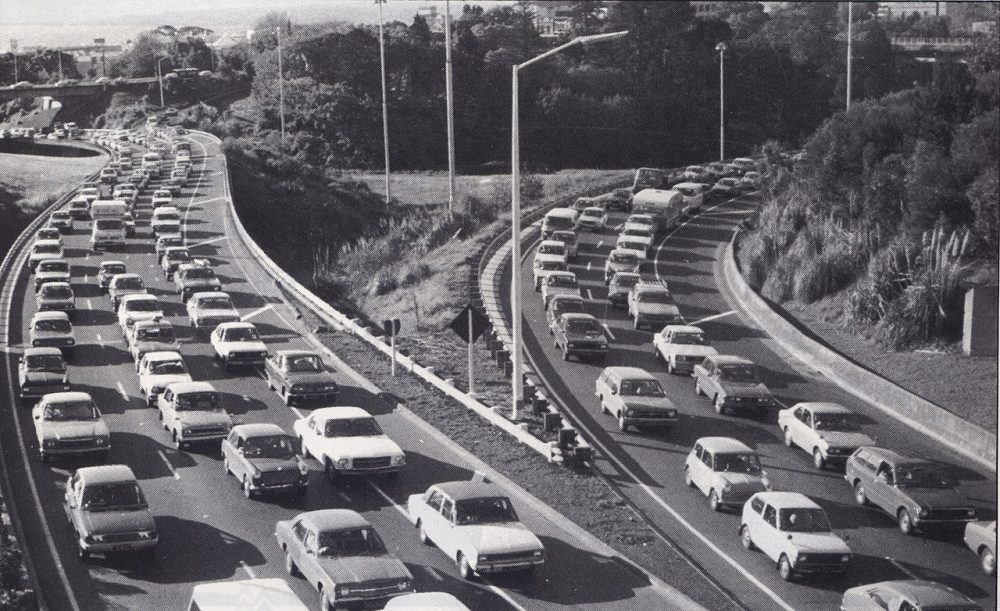 Traffic jams like this were a common sight in late-1960s Japan
Traffic jams like this were a common sight in late-1960s Japan
Photo: Riley via CC
The world of vehicle and traffic safety has gone through a lot of change over the years. Today, drivers and their families are lucky enough to live in a world where cars — and the places where they drive —are safer than ever before. Unfortunately, things weren’t always this way. This is the story of a time and place where expanding industry and economic growth resulted in regular traffic-related tragedies. Welcome to the heartbreaking world of Japan’s “yellow cap” generation.
The Strength You Need: The legendary Chevy Silverado 1500
The Japan of the late 1960s and early 1970s was a place of unprecedented growth. Following its miraculous economic recovery in the years after WWII, the country had experienced a boom in industry. Within a mere 10 years, many cities around the country had transformed into factory towns. Places like Kawasaki became congested with endless traffic due to the number of people working at the factories.
Most of these jobs paid little money. For the first time in Japan’s modern history, many families were forced to take on multiple jobs: husbands would work one, and wives would work the other. Many of these couples were also parents.
This created an entire generation of “latchkey children” in Japan. These were young kids who walked to and from school every day by themselves, fed themselves dinner, and put themselves to bed. It was a lonely generation to be a part of, and also a dangerous one.
The relative autonomy of these children inevitably put them in harm’s way. In order to get to school, many of these children would be required to navigate endless winding highways full of speeding cars. It was a volatile situation, and unsurprisingly, it would lead to tragedy.
During this era in Japanese history, the number of traffic accidents began to rise at an alarming rate. Statistics reveal that roughly 16,765 lives were lost in 1969 alone. Worse still, the majority of those losses were pedestrians, with many being children.
The situation got so bad that the government and many local businesses began to step in. Their solution: make yellow baseball caps available to the children of highly congested industrial areas. The idea behind these hats — many of which were officially branded and bore the emblems of popular Japanese baseball teams — was that a child wearing one would be far more visible to oncoming traffic. It was hoped that by making the children stand out, tragedies could be averted.
For several years, children wearing yellow caps were a common sight on Japanese sidewalks. The tragic phenomenon even became the subject of pop-cultural examination, with multiple films and TV shows from the era bringing attention to the plight of these children. Notable examples include Nagisa Oshima’s Boy and Ishiro Honda’s All Monsters Attack, both released at the height of the situation in 1969.
Versatility Defined: The Chevy Equinox
Although it took many years of hard work, Japan was able to get the rampant traffic accidents and hit-and-run incidents of the late 1960s under control. Despite a worrying spike in accidents again in the late 80s and early 90s, Japan is now considered one of the safest places for unattended children in the world. With all of the modern car-related safety conveniences and precautions we’re able to enjoy today, it’s important to spare a thought for a time and place when the system failed the weakest and most precious among us. By learning from the past, we can continue to create a better, safer world for drivers and pedestrians alike.

The News Wheel is a digital auto magazine providing readers with a fresh perspective on the latest car news. We’re located in the heart of America (Dayton, Ohio) and our goal is to deliver an entertaining and informative perspective on what’s trending in the automotive world. See more articles from The News Wheel.



